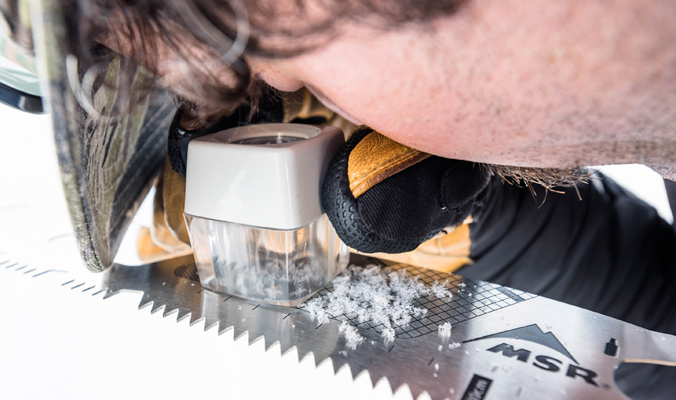Two Marches back, as I stood on the edge of the frozen Bell Lake in Montana’s Tobacco Root Mountains, I knew I was exactly where I needed to be. Together with a half dozen no-longer-strangers, I pondered aloud the best route to safely ascend and later ski the face before us that stretched its rock-lined fingers upward like those of a white, fat catcher’s mitt. It was the first afternoon of a multiday ski-mountaineering course with Big Sky Backcountry Guides, and I was already drawing upon what felt like every decision-making skill I’d ever been taught or learned on my own in order to unlock my next level of mountain knowledge.
So it goes with backcountry education, an endless process of compounding formal and informal lessons into an ever-deepening repertoire of skill and understanding. And while the formal stuff costs money and requires ample time, it can be the most foundational in developing a solid skill set. Here’s how your next course can be your most meaningful.

Photographer Bruno Long checks his focus near Revelstoke, B.C. [Photo] Reuben Krabbe
To figure out where you’re going, you first need to know where you stand. This holds true in both the mountains and in backcountry education. Start by realistically considering your current skill set and experience and the terrain and situations in which you’re most comfortable; then ponder where you’d like to go and what terrain or objectives you’d like to ski; finally consider the gaps that need filling to get there and how a course could meet those needs. Consider what you hope to be doing a few years from now and how you can build a foundation for that this season. Beyond evaluating what you’re looking to get from a course, know what you’re bringing to it. A minimum level of touring proficiency will go a long way in Avy 1, as will a strong touring and decision-making background in a ski-mountaineering course.
Learn What’s Out There
Avalanche course curriculum underwent a major change last winter—it’s no longer simply Avy 1, 2 and 3. Now, there are more courses to better reach the needs of more types of backcountry travelers, divided along recreational and professional tracks in a choose-your-own adventure of avalanche education. Touring for the fun of it and not for a job? Hit the recreational track, which starts with a Level 1 course and can be followed up with a rescue course and Level 2, all of which focus on decision making, snow science, how to study the forecast and how to conduct stability tests. Planning to become a patroller, guide or search and rescue specialist? Follow the professional track, which focuses more deeply on documenting, interpreting and communicating snowpack observations. But there are more than just avalanche courses out there to expand your horizons—check out the sidebar on the following page for a plethora of options and a few resources to get started.
Really Show Up
A course is neither a regular day of touring or an intensive educational seminar—instead, it falls somewhere between the two, so it’s important to show up ready for both. In the field, there’s likely to be time spent digging around, standing in snow pits and in group discussions where your brain may be more active than your body—bring extra warm layers and that double-size thermos of hot drink. Be the nerd in the front row and take control of your learning: bring a list of things you’re hoping to better understand and the questions, concerns and uncertainties you have. Take notes on a Rite-In-The-Rain pad with a mechanical pencil. Engage, follow up and ask to practice anything that’s unclear until you have it down. You’re paying for this experience—make it count.
Use What You’ve Learned
A course doesn’t mark the end to an educational journey. Take your notes and knowledge and begin practicing right away. Start slowly in simple terrain with low consequences; keep writing things down to track your progress and the questions you still have; stay in touch with your instructor. Learn from and with your partners, too—find an individual with more experience who can serve as a mentor, but also engage with those of similar experience who may be equally interested in practicing skills instead of touring or when conditions aren’t optimal. Then consider the next progression: a refresher course, a class focused on first aid, winter-weather forecasting or advanced rescue skills or an annual snow and avalanche workshop. The options for learning are as limitless as the process itself.
This story was originally published in February 2019. For more stories like this, click here to subscribe.











Shane Robinson (AMGA-certified ski guide) is doing a hut-based AIARE 1 and Backcountry 101 combined course in Canada next year, awesome opportunity. I’m doing an AIARE 2, hut-based, taught by IFMGA mtn guides, in Canada as well. Private French chef, helo in/out, oh yeah! Do your homework before taking a course—huge array of instructors out there, some with tons of experience and others not as much. Good luck!